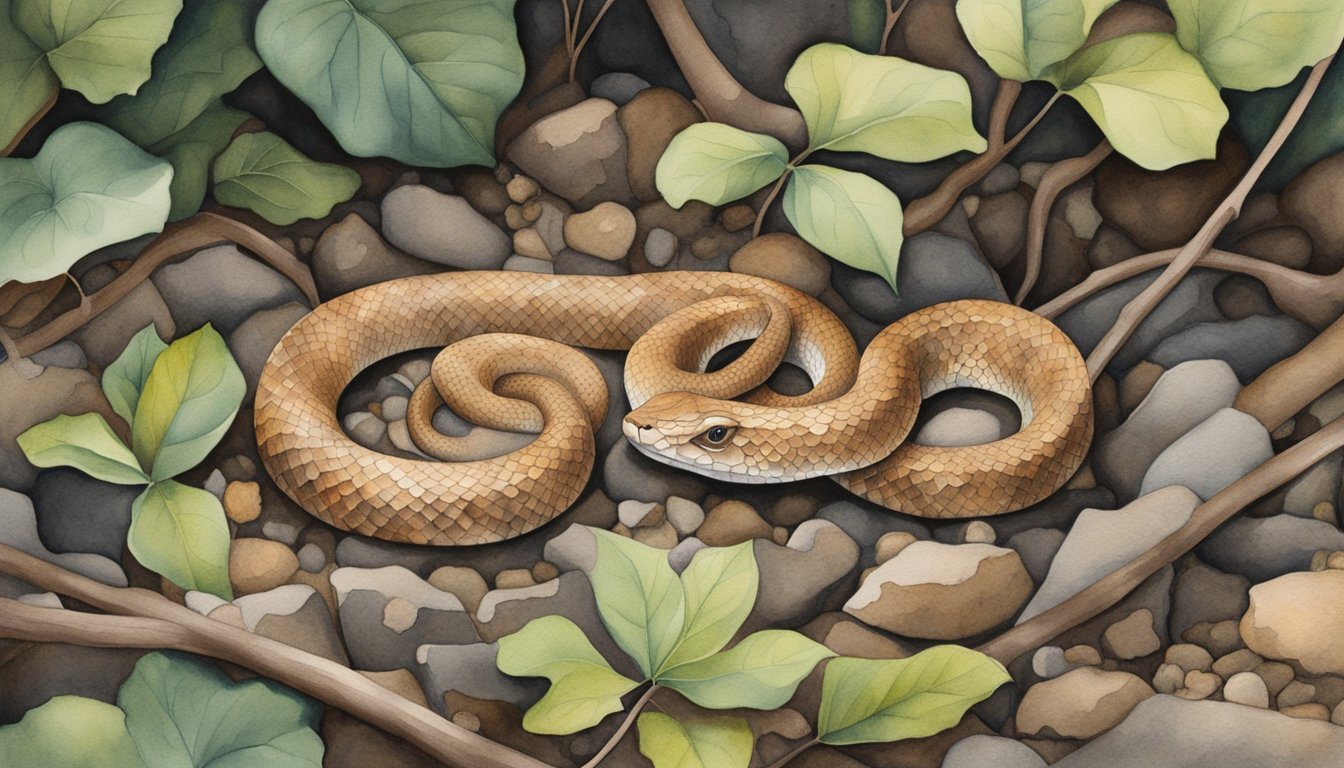Copperhead Characteristics

Physical Description
Copperheads (Agkistrodon contortrix) are a species of venomous snake belonging to the pit viper family, Viperidae. They have a distinctive coloration consisting of a reddish-brown coppery body, with hourglass-shaped bands that aid in their camouflage. Adult copperheads typically range from 2 to 3 feet in length, with females usually being larger than males. These snakes have a heavy body structure, but their form is more slender compared to most other pit vipers.
Habitat and Distribution
There are five subspecies of copperheads, including the northern copperhead and southern copperhead, which inhabit different regions across eastern North America. Copperhead snakes can be found in various habitats, such as deciduous forests, swamps, and river bottoms, where they make use of their excellent camouflage abilities to blend into their surroundings.
Diet and Hunting Behavior
Copperhead snakes are carnivorous reptiles, primarily feeding on small mammals, birds, and other reptiles. They possess fangs and venom that aid in their hunting and defense. Though their venom is rarely fatal to humans, it can still cause significant pain and swelling. Copperheads rely on their pit viper characteristics to detect their prey’s body heat, allowing them to effectively hunt at all hours.
Copperhead Interactions
Reproduction and Life Cycle
Copperheads, a type of pit viper, are found in a variety of habitats across eastern North America, including woodland, swampy areas, and wetlands. They reproduce through breeding season, which occurs during late spring and fall. The southern and northern copperhead species have similar reproductive habits.
Copperheads are known for giving birth to live young, as opposed to laying eggs. A pregnant female can give birth to several offspring housed in sac-like structures called ova. After a gestation period of around three to nine months, these juvenile snakes are born fully equipped with venom and ready to hunt small prey like lizards, rodents, and birds.
During the breeding season, male and female copperheads engage in ritualized combat, involving swaying and neck hooking. This behavior helps them establish dominance and secure a mate. Mating pairs also hibernate together during the winter months in communal dens alongside other snake species.
Human and Wildlife Encounters
Despite their venomous nature, copperhead snake bites aren’t as dangerous as many people may think. In fact, bites are rarely fatal and usually only require medical attention for treatment. However, it is important to remain cautious when encountering a copperhead in the wild, as they are ambush predators and often perfectly blend in with their forest surroundings.
Human and copperhead interactions aren’t limited to potential snake bites. Researchers have discovered that copperhead venom may contain components useful for medical treatments, such as cancer. With this knowledge, conservation efforts and further study into the potential benefits of their venom are ongoing.
Copperheads also play an essential role in their ecosystem as both predators and prey. While these snakes feed on various animals like rodents and birds, they are also preyed upon by larger predators. This species is currently listed as least concern by the IUCN Red List, which is a testament to their relatively stable population and distribution across their native habitat.

